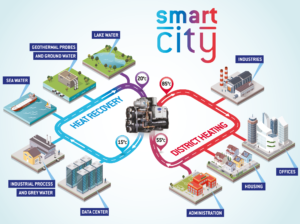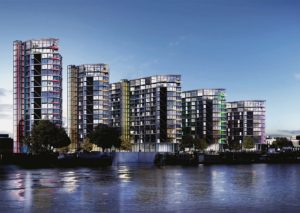 Carrier’s new Continuing Professional Development (CPD) module for consultants, developers and system designers highlights opportunities for large-scale energy savings using district heating and cooling schemes. Carrier, a world leader in high-technology heating, air-conditioning and refrigeration solutions, is a part of Carrier, a leading global provider of innovative heating, ventilating and air conditioning (HVAC), refrigeration, fire, security and building automation technologies.
Carrier’s new Continuing Professional Development (CPD) module for consultants, developers and system designers highlights opportunities for large-scale energy savings using district heating and cooling schemes. Carrier, a world leader in high-technology heating, air-conditioning and refrigeration solutions, is a part of Carrier, a leading global provider of innovative heating, ventilating and air conditioning (HVAC), refrigeration, fire, security and building automation technologies.
Developed by Carrier in conjunction with the Chartered Institute of Building Services Engineers (CIBSE), the module is designed to explain the growing need for integrated and efficient heating and cooling solutions to meet the demands of increasingly urbanised living.
According to a recent United Nations report, Revision of World Urbanization Prospects, 81% of people in high income countries such as the US, UK, France, Canada and Australia already live in urban areas, and this is forecast to rise to nearly 88% by 2050. To deliver truly ‘smart’ cities, the module suggests that planners and designers will need to evolve sustainable heating and cooling solutions that are correspondingly clever.
A key approach to developing smart cities is the application of modern heat pumps employing low global warming potential (GWP) refrigerants as a means of maximising primary energy use, and harnessing secondary energy that would otherwise be wasted, to reduce overall environmental impact.
 In addition to capturing heat rejected from buildings to help meet heating and cooling demand, there is a major opportunity to harness waste heat generated from other sources – such as power stations, data centres, metros, power distribution and industry – as a byproduct of their main activity.
In addition to capturing heat rejected from buildings to help meet heating and cooling demand, there is a major opportunity to harness waste heat generated from other sources – such as power stations, data centres, metros, power distribution and industry – as a byproduct of their main activity.
A recent European Commission report, An EU Strategy on Heating and Cooling, highlights that, theoretically, there is enough waste heat produced in the EU to heat all of the residential and tertiary buildings in the EU.
“Carrier was among the first manufacturers in the UK to develop district heating and cooling schemes that share HVAC plant across several buildings,” said Carrier regional sales manager David Evans. “With modern heat pumps running on low-GWP refrigerants, the savings in both energy and carbon can be substantial. The approach is good for the environment and good for end users, as it keeps running costs low.
“With growth in cities and urban living forecast to continue rising over the next few years, we believe this inter-building approach will grow, as the benefits are clear. Carrier is at the forefront with a comprehensive range of proven low-GWP chillers and heat pumps ready to meet the need.”

